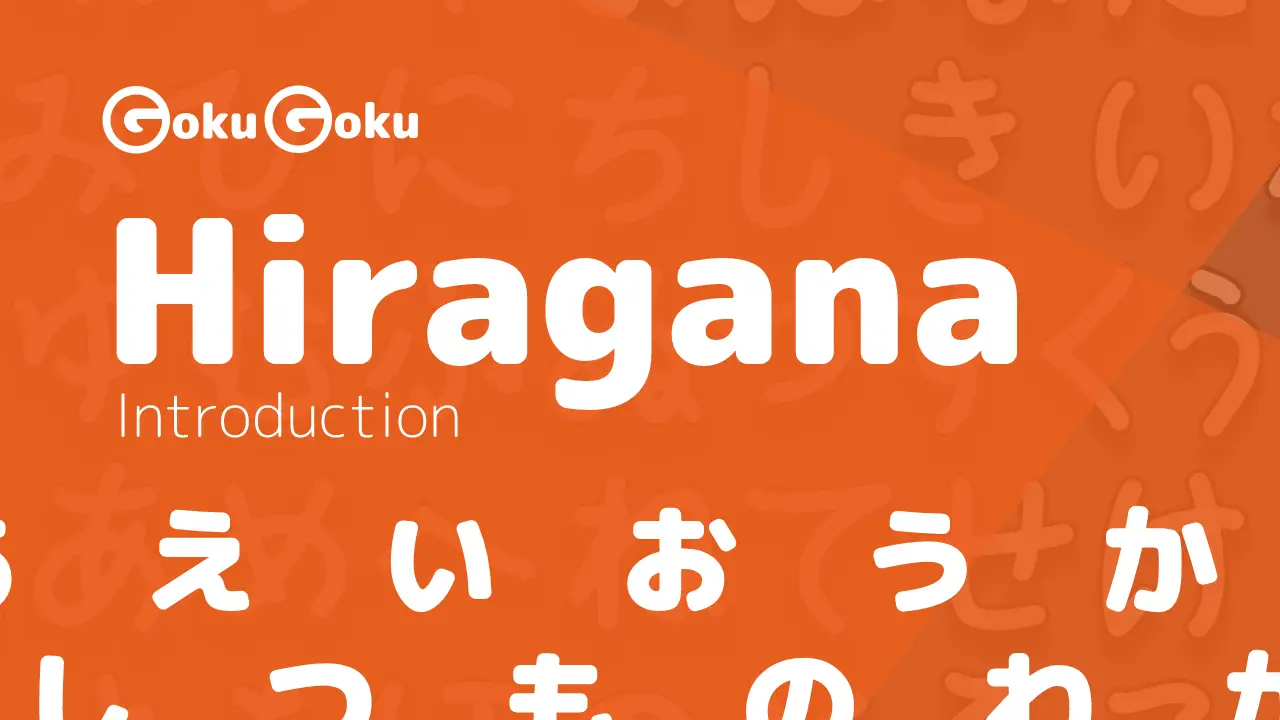Godan Verbs in Japanese | Everything you need to know
Sandro Maglione
Get in touch with meGodan verbs (五段) are a class of verbs in Japanese. These are called Godan (五 = 5) because their conjugations use all 5 sounds of the Hiragana alphabet (あ, え, い, お, う).
These verbs are also referred to as Verbs in う (u), since they all end in Hiragana characters belonging to the う column.
Some of these verbs also end in る, so be careful not to confuse them with Ichidan verbs.
How to recognize Godan verbs
As we have seen, Godan verbs or verbs in う (u) have the particularity of ending all with Hiragana characters of the う column.
Specifically, these characters and their readings are the followings:
- く
ku - ぐ
gu - す
su - つ
tsu - ぬ
nu - ぶ
bu - む
mu - う
u - る
ru(special case)
Whenever you encounter a verb that ends with one of these characters you can identify it as a Godan verb.
The only exception are verbs ending in る, which can also be Ichidan verbs.
Let's see some examples for each of these characters:
- 書く
to write - 泳ぐ
to swim - 話す
to speak - 勝つ
to win - 死ぬ
to die - 選ぶ
to choose - 読む
to read - 買う
to buy - 変わる
to change
死ぬ is the only verb in modern Japanese that ends with the Hiragana character ぬ
Non-past form of Godan verbs
In Japanese there is only one verb form for both the present tense and the future tense; this is often called the non-past form.
To distinguish whether the sentence is in the present or in the future tense you need to know the context around the sentence.
Same as for Ichidan verbs, the plain (non-past) form of Godan verbs is the same as the base form, also called dictionary form, and requires no conjugation.
小説を書く。
To write a novel.
In this first example the verb write (書く) does not need any conjugation to form the present tense:
- 小説
novel(noun) - を: indicates the object of the sentence,
the thing that...(particle) - 書く
to write(Godan verb)
How to conjugate Godan verbs
Godan verbs are different from Ichidan verbs in that their conjugation changes based on their base. In fact, Godan verbs have 5 bases, each with a different conjugation.
五段 (Godan) actually means "5 bases" (5:五, bases: 段).
Ichidan verbs 一段 instead have "1 base" (1: 一).
The 5 bases correspond to the columns of the syllabary: か, き, く, け, こ.
However, the basic idea is similar for each of these conjugations:
- Remove the last Hiragana character of the verb Godan
- Replace the removed character with its respective character based on the specific conjugation
- Add a verbal suffix (when needed, such as ます (
masu) for the polite form)
The character to be replaced depends on the verb base to be conjugated, let's see some examples below:
- ku becomes ki (the
kremains, while the last vowel changes)
- su becomes sa
- nu becomes ne
- mu becomes mo
Each of these bases forms a different conjugation. You can learn more about each of these conjugations in the article dedicated to the 5 verb bases.
Polite plain form of Godan verbs
The polite non-past form is formed by changing the last syllable from the column う to equivalent in the い column, and then adding the suffix ~ます.
Let's see step by step an example with the verb 聞く to listen:
In the example above, the verb to listen (聞く) modifies the syllable く from the う (ku) column to its counterpart in the い column: き (ki).
We then add ~ます to complete the polite form.
話を聞く。
To listen to the story.
話を聞きます。
To listen to the story.
As you can see, the polite form has the same translation as the dictionary form seen above. If you want to learn more about the polite form in Japanese we recommend reading the dedicated article.
Let's look at some other examples of conjugation in the polite form for Godan verbs:
日本が変わります。
Japan will change.
Non-past negative form of Godan verbs
The negative non-past form is formed by changing the last syllable from the う column to the corresponding one in the あ column, and then also adding the suffix ~ない (ない means to not exist).
There is an exception for the vowel column: う in fact becomes わ and not あ.
Let's see step by step an example with the same verb seen previously 聞く to listen:
In the example above, the verb to listen (聞く) changes the syllable く from the column う (ku) to its counterpart in the column あ: か (ka).
We then add ~ない to complete the negative form.
話を聞く。
To listen to the story.
話を聞かない。
To not listen to the story.
Polite negative form for Godan verbs
The polite form introduces a conjugation and an alternative suffix for the negative.
In fact, in the polite form the last character is changed from the う column to the い column, the same as seen previously with the non-past form.
In the negative, however, ません is used instead of the suffix ます:
話を聞きません。
To not listen to the story.
It is also possible to find the conjugation with ない with the addition of the suffix です (desu) in the polite negative form.
話を聞かないです。
To not listen to the story.
Conjugate Godan verbs in the past tense
The conjugation of Godan verbs becomes more complex when introducing the past tense (た form).
In this case the conjugation changes based on the last Hiragana character of the verb in question.
This variation occurs for many verb forms, including the て form, the ば form, as well as the た form.
Each of these variations requires memorization, and is specific to the class of Godan verbs.
Let's now look at each of these variations individually.
Godan verbs in column K
- Remove the Hiragana character
k(く) - Add the equivalent in the い column (き)
- Remove
kfrom the base:kibecomes justi(い) - Add the suffix た (for the た form)
Godan verbs in column G
- Remove the Hiragana character
k(ぐ) - Add the equivalent in the い column (ぎ)
- Remove
kfrom the base:gibecomes justi(い) - Add the suffix だ (for the た form)
Godan verbs in column S
- Remove the Hiragana character
s(す) - Add the equivalent in the い column (し)
- Add the suffix た (for the た form)
Godan verbs in columns N, B, M
- Remove the Hiragana character
n,b,m(ぬ, ぶ, む) - Add the equivalent in the い column (に, び, み)
- Change
n,b,mall tonand removei - Add the suffix だ (for the た form)
Godan verbs in column T, R, W
- Remove the Hiragana character
t,r,w(つ, る, う) - Add the equivalent in the い column (ち, り, い)
- Change
t,r,iall to a doubletand removei - Add the suffix た (for the た form)
Past polite form for Godan verbs
Fortunately, when conjugating the polite form for Godan verbs in the past tense the process is easier.
In fact, it is enough to add the suffix ました instead of ます, which follows the rules we have seen above for conjugation in the past tense:
話を聞きました。
Have heard the story.
Similar grammar points in Japanese 📚
から
から (kara) Meaning Japanese Grammar - Because
だけ
だけ (dake) Meaning Japanese Grammar - Only
たりする
たりする (tari suru) Meaning Japanese Grammar - Do Such Things as A, B Etc
ちがう
ちがう (chigau) Meaning Japanese Grammar - No
まだ
まだ (mada) Meaning Japanese Grammar - Still
ないでください
ないでください (naide kudasai) Meaning Japanese Grammar - Please Do Not Do

